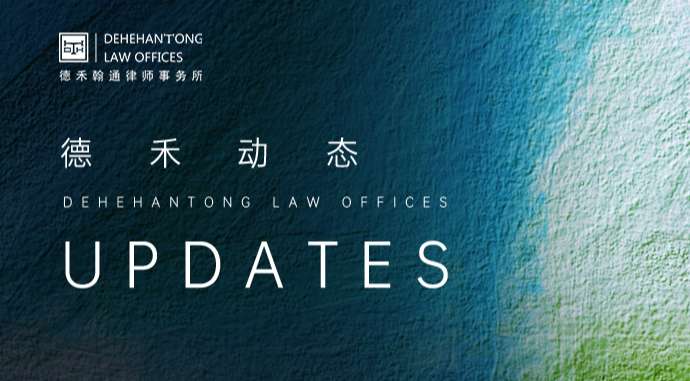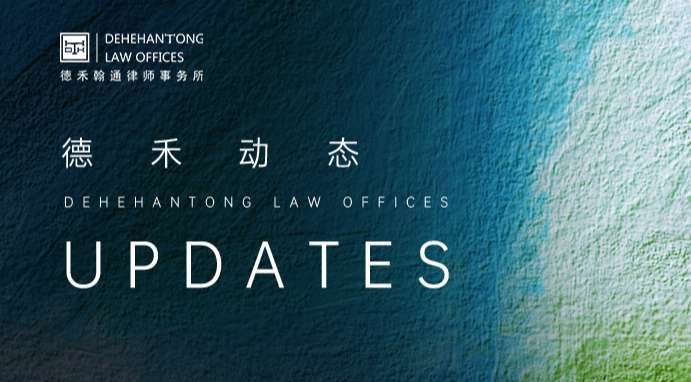Revelation of Bond Disputes (1) : The New Company Law and the restructuring of bond governance
introduction
According to the latest"Financial Market Operation in July 2024"released by the People's Bank of China, as of the end of July, the bond market custody balance was 166.3 trillion yuan. Among them, the trusteeship balance of the interbank market was 145.7 trillion yuan, and the trusteeship balance of the exchange market was 20.6 trillion yuan. [1] In the face of the ever-expanding bond market, increasingly tightened financial supervision standards, and frequent bond defaults, it has become a top priority for all stakeholders in the bond market to act in accordance with the law and protect their legitimate interests.
To this end, Dehehantong financial dispute dispute resolution team will combine practical experience, launched the"bond dispute Revelation"series of articles, around the three aspects of bond governance, bond default disposal, bond misrepresentation, focusing on the current core issues in the field of bond disputes, and put forward practical suggestions.
This is the first article in the"Bond Dispute Revelation"series, and we will discuss the restructuring of corporate bond governance pattern under the new"Company Law".
New Company Law and bond regulation system
The Company Law of the People's Republic of China (2023 Amendment), which came into effect on July 1, 2024 (hereinafter referred to as the"New Company Law"), has attracted much attention, and has made a variety of innovative optimization provisions on the internal organization and external activities of the company. On the basis of the original Company Law of the People's Republic of China (2018 Amendment) (hereinafter referred to as the"2018 Company Law"), it has been substantially supplemented and amended, echoing the Securities Law, and has milestone significance for the development of China's current bond market.
1. Bond regulation system before the implementation of the new Company Law
For a long time, China's bond market supervision is in a state of"fragmentation".
From the perspective of trading places, China's bond market can be mainly divided into three categories: counter market, interbank market and exchange market. From the perspective of bond varieties, it can be mainly divided into corporate bonds (narrow sense), corporate bonds and non-financial corporate debt financing instruments (that is, medium-term notes). Different trading venues and types of bonds determine the various aspects of bond issuance, trading and registration, which need to face different regulatory agencies and regulatory systems. Common regulatory agencies include the People's Bank of China, the National Development and Reform Commission (before 2023), the CSRC, and the Ministry of Finance, which is responsible for the supervision of national debt, local government debt and government-backed securities. The Financial Supervisory Authority, which is responsible for the preliminary supervision of financial bonds.
The"disconnection"situation based on historical reasons has led to many disputes in the application of laws and norms of conduct in the bond market, which is not conducive to the benign development of the bond market. Therefore, the unification of the bond legal system has become an urgent need of the bond market.
In December 2018, the People's Bank of China, the CSRC and the National Development and Reform Commission issued the Opinions on Further Strengthening Law Enforcement in the Bond Market, specifying that the CSRC should carry out unified law enforcement work against illegal acts in the interbank bond market and the exchange bond market.
In July 2020, the Supreme People's Court issued the"Minutes of the Symposium on the Trial of Bond Dispute Cases in National Courts"(hereinafter referred to as the"Minutes of the Bond Meeting") to put forward the view of"unified law application"for the three types of corporate credit bonds (narrow sense), corporate bonds, and non-financial corporate debt financing instruments.
In March 2023, the National People's Congress passed the decision on the institutional reform plan of The State Council, transferring the responsibility for the review of corporate bond issuance to the CSRC. Subsequently, the CSRC and the National Development and Reform Commission issued the Announcement on the Work Arrangement for the Transition period of the Review responsibility for Corporate bond Issuance, setting up a six-month transition period to ensure the smooth transition of the transfer work.
In October 2023, after the six-month transition period expires, the CSRC issued the updated Measures for the Administration of Corporate Bond Issuance and Trading (2023), and the first article of the general provisions was updated to read:"In order to regulate the issuance, trading or transfer of corporate bonds (including corporate bonds)..."
Although the above norms indicate the vision of unified supervision and unified normative system, whether it is departmental rules, normative documents or meeting minutes, its effectiveness level is low, and the implementation of the new"Company Law"is to further promote the unity of the bond legal system at the legal level.
2. The response of the New Company Law to the bond regulation system
(1) The legal level confirms the"non-public offering"of bonds
New company law
Article 194 The term"corporate bonds"as used in this Law refers to the marketable securities issued by a company that have agreed to repay the principal and interest on a scheduled basis.
Corporate bonds may be issued publicly or privately.
The issuance and trading of corporate bonds shall comply with the provisions of the Securities Law of the People's Republic of China and other laws and administrative regulations.
Companies Act 2018
Article 153 The term"company bonds"as used in this Law refers to the marketable securities issued by the company in accordance with legal procedures and agreed to repay the principal and interest at a certain time limit.
The issuance of corporate bonds by a company shall comply with the issuance conditions stipulated in the Securities Law of the People's Republic of China.
Article 159 (2) If a company's bonds are listed and traded at a stock exchange, they shall be transferred in accordance with the trading rules of the stock exchange.
The current situation of China's bond market is parallel to public offering and private placement. In 2015, the China Securities Regulatory Commission (CSRC) stipulated in the Measures for the Administration of Corporate Bond Issuance and Trading that"Corporate bonds can be issued publicly or privately", which has been used ever since.
However, from the perspective of the legal level, the 2018 Company Law does not specify that corporate bonds can be non-public offering, and also provides for the cause clause, clarifying that corporate bonds should meet the issuance conditions stipulated in the Securities Law, but the provisions of the Securities Law on corporate bonds have the prefix of "public offering", and do not stipulate the applicable rules for private placement bonds. Therefore, before the new Company Law came into effect, there was no legal level compliance guidance for private placement bonds in China's bond regulatory system, which caused obstacles in the application of law.
The new"Company Law"not only clearly stipulates at the legal level that"corporate bonds can be publicly issued or non-public", but also adjusts the resulting provisions to express the second paragraph of Article 159 of the 2018"transfer in accordance with the trading rules of the stock exchange". It is integrated into the second paragraph of Article 194 of the new Company Law"in accordance with the provisions of the Securities Law of the People's Republic of China and other laws and administrative regulations"to achieve effective connection with the regulatory norms under different trading venues.
(2) Establish unified regulatory departments at the legal level
New company law
Article 195 The public issuance of corporate bonds shall be registered with the securities regulatory body under The State Council...
Companies Act 2018
Article 154 After the application for issuing corporate bonds has been approved by the department authorized by The State Council...
The new"Company Law"changes the supervision department of the public debt issuance stage from"the department authorized by The State Council"to"the Securities regulatory Agency of The State Council", effectively responding to the status quo of corporate bonds (narrow sense) and corporate bonds unified supervision by the CSRC, and changes the word"approval"to"registration", and responds to the amendment of the Securities Law in 2019. The registration system of public issuance of bonds is clear at the legal level.
The holder protection system under the new Company Law
The stakeholder nature of corporate bonds determines the power imbalance between the holder and the issuer. Therefore, how to build an effective holder protection system and balance the contradiction between the collective will of the holder and the dissenting holder is also an important part of the bond governance system. To this end, the new Company Law adds provisions related to the bond holder meeting system and the trustee system when the 2018 Company Law is completely vacant, which is of great significance to the bond governance pattern.
1. Bond holder meeting system
(1) The system of rules of the bondholder meeting system
Article 204 of the new Company Law stipulates:"Where corporate bonds are publicly issued, a bond holders' meeting shall be established for the bond holders at the same time, and provisions shall be made on the convening procedures, meeting rules and other important matters of the bond holders' meeting in the bond offering measures."A meeting of bondholders may decide on matters of interest to bondholders. Unless the company's bond offering method is otherwise agreed, the resolution of the bond holders' meeting shall be effective for all the bond holders in the same period.
The bondholder meeting system can be traced back to the"Pilot Measures for the issuance of corporate bonds"formulated by the CSRC when it launched the corporate bond market in August 2007, but it was not until the amendment of the Securities Law in 2019 that this system was first confirmed at the legal level, and the provisions of the Securities Law are still relatively general. This new"Company Law"is the first time to clarify the effect of the resolution of the bond holder meeting at the legal level, that is,"unless otherwise agreed by the company's bond offering method, the resolution of the bond holder meeting shall be effective for all bondholders in the same period."
At present, the rules of the bond holder meeting have realized a normative system with the Company Law, Securities Law and Administrative Measures for issuing and Trading of Corporate Bonds as the overall rules and the supporting documents formulated by each trading venue as the implementation rules. Specifically, for interbank bonds, The China Inter-Bank Market Dealers Association issued the Meeting Rules for Holders of Debt Financing Instruments of Non-Financial Enterprises in the Inter-Bank Bond Market. For stock exchange bonds, the Shanghai Stock Exchange and the Shenzhen Stock Exchange respectively issued the Shanghai Stock Exchange Corporate Bond Duration Business Guide No. 1 - Rules for Corporate Bond Holders' Meetings (Reference text) and the Guide for the Preparation of rules for Shenzhen Stock Exchange Corporate Bond Holders' Meetings (Reference text).
(2) Functions of the bondholders' meeting
The essence of bondholders is the external creditors of the issuer. The core function of the bondholders' meeting is to gather individual creditors together and serve as a channel for the company to communicate with creditors, so that creditors can follow up the company's business trends in a timely manner. Once the company is poorly operated, creditors need to transfer part of their rights and make decisions such as interest rate reduction and extension. Bondholder meetings can also provide a convenient and quick decision-making channel to achieve a holistic dialogue between creditors and the company.
The core functions and rights of the bond holder meeting include changing the use of funds, changing the agreement of the bond offering prospectus, amending the rules of the bond holder meeting, changing the main content of the bond trustee or the trustee management agreement, and reviewing the debt restructuring plan proposed by the issuer.
For the decisions corresponding to the above functions, each trading market has formulated the bottom line standards for the adoption of decisions. For example, the Regulations for the Meeting of Holders of Debt Financing Instruments of Non-financial Enterprises have made specific provisions on the holding circumstances of holders' meetings, convening and decision-making procedures, the conditions for the validity of resolutions, and the scope of validity, and the above provisions are taken as the bottom line requirements. Requiring the issuer to agree on no less than the meeting procedures in the issuance documents; The Shanghai Stock Exchange and Shenzhen Stock Exchange also make it clear that the trustee may make a higher standard agreement based on the relevant provisions of the Reference Text according to the actual situation or the communication with the intended investors and issuers, or further supplement and refine other agreements, but shall not damage the legitimate rights and interests of investors.
Through the existing rules, the bondholders' meeting can achieve effective expression and self-management, enhance the independence of the holders' meeting, and integrate the antagonistic forces between the issuer and the bondholders to achieve the balance of interests of all parties.
2. Trustee system
(1) Trustee system rules
Article 205 of the new Company Law stipulates:"Where a company publicly issues its bonds, the issuer shall engage a bond trustee for the bond holders, who shall handle matters such as acceptance of repayment, creditor's rights preservation, bond-related litigation and participation in the debtor's bankruptcy proceedings for the bond holders."
Article 206 of the new Company Law stipulates:"The bond trustee shall be diligent and responsible, perform the fiduciary management duties impartially, and shall not harm the interests of bond holders."Where there is a conflict of interest between the trustee and the bond holders which may harm the interests of the bond holders, the bond holders' meeting may decide to change the bond trustee. Where the bond trustee violates laws, administrative regulations or resolutions of the bond holders' meeting and damages the interests of the bond holders, he shall be liable for compensation.
Similar to the bondholder meeting system, the trustee system was also first born in the"Pilot Measures for Corporate Bond Issuance"in August 2007, and was first confirmed at the legal level when the Securities Law was amended in 2019.
(2) The significance of trustee system under the new Company Law
Although in theory, the trustee should represent the interests of bondholders, in practice, the trustee is usually selected by the issuer and has inextricably linked interests with the issuer. Therefore, the amendment of the Company Law not only reaffirms the legal status of the trustee, but also further clarifies the scope of duties and civil liability of the trustee.
Article 205 of the new Company Law, on the basis of Article 92 of the Securities Law, extends the performance period of the trustee to the entire duration of the bond, including not only the original litigation and participation in bankruptcy liquidation procedures, but also the acceptance of repayment, creditor's rights preservation, and the word"etc."as the cover, leaving room for interpretation of the duties of the trustee.
In addition, the new Company Law also clarifies the basis of the right of bondholders to claim damages from the trustee, echoing Article 25 of the Minutes of the Bond Meeting, emphasizing the obligation of the trustee to be"diligent and responsible"and"perform the fiduciary management duties impartially", and provides a path for after-action relief. Some procedures restrict the violations caused by the trustee due to potential conflicts of interest, and enhance the protection of holders.
Key points of potential disputes on bond governance under the new Company Law
Although the new Company Law has filled many gaps in bond governance and realized the restructuring of the governance pattern of China's bond market, whether it can properly resolve the disputes in judicial practice remains to be further verified. To this end, we combine the new Company Law and past practical experience to sort out the key points of potential disputes over bond governance as follows.
1. Validity identification of defective resolution of holder meeting
The new Company Law stipulates that the meeting of bondholders can make resolutions on matters of interest to bondholders, but it does not specify how to identify the legal consequences if the resolution is defective, and what remedies are available to dissenting holders.
Article 15 of the Minutes of the Bond Meeting stipulates that the resolutions made by the bond holders' meeting in accordance with the scope of resolutions, procedures and voting procedures stipulated in the bond offering documents shall be deemed lawful and valid by the People's Court unless there is a legal cause of invalidity. If there are situations such as "the content of the resolution exceeds the scope of the resolution stipulated in the offering document", "the method of discussion and voting procedure do not conform to the provisions of the offering document"or"there are legal invalid reasons", the validity of the resolution may be flawed, however, the minutes of the bond meeting does not further specify how to determine the validity of the resolution in such circumstances.
In the case of bond trading dispute between Kaidi Eco-Environmental Technology Co., Ltd. and Founder Securities Underwriting & Sponsor Co., LTD. [2] heard by the Supreme People's Court, the convenor of the meeting did not issue a notice of the meeting 15 days in advance in accordance with the Rules of the Holders' Meeting, but only 1 day in advance. The holders' meeting passed the"Bill on exempting this bondholders' meeting from giving notice of the meeting 15 days in advance", according to which the Supreme People's Court held that the defects in the convening procedure of the bondholders' meeting could be corrected by the resolution of the bondholders' meeting, and other resolutions passed at the holders' meeting were valid. It can be seen that the Supreme People's Court is more inclined to the consent of the parties to such issues, rather than easily negating the validity of the resolution.
In the cases related to the fund share holders' meeting, which has a certain similarity in the legal relationship with the bond holder meeting, the Shanghai Financial Court held that the defects in the convening procedure constituted the breach of contract of the fund manager in the dispute over the entrusted financial management contract between Haisheng Investment (Shanghai) Co., Ltd. and Hu Beili [3]. Article 9 of the fund contract stipulated that the fund share holders' meeting should be held. The convenor must notify the Fund share holders 30 days before the meeting, but the fund manager only published the relevant notice of the meeting through the website, and did not provide evidence to prove that the notice was notified to the fund share holders through the fund contract or other written means, on this basis, the Shanghai Financial Court held that the procedure for convening the meeting was flawed, and found that the fund manager constituted a breach of contract. However, in this case, the Shanghai Financial Court did not explicitly respond to the validity of the resolution, and did not easily determine that the formed resolution was invalid.
As can be seen from the above cases, in existing judicial practice, there is a lack of objective and unified standards for determining the effectiveness of relevant resolutions when there are defects in the procedures of bond holder meetings, and the revision of the new Company Law has not responded in terms of effectiveness. In contrast, the Company Law and its judicial interpretation have formulated very detailed rules on the effectiveness level and application of the shareholders' meeting and the Board of directors, and whether the bondholders' meeting can refer to the corresponding rules remains to be further verified.
2. The civil liability identification of the trustee
Although the new Company Law makes it clear that if the trustee damages the interests of the bondholders, it should bear the liability for compensation, it does not further clarify the nature of the legal relationship between the bondholders and the trustee, which may cause disputes in the future at the level of law application and rights and responsibilities.
In practice, there are many viewpoints on the relationship between bond holders and trustee, such as"principal-agent","fiduciary"and"fiduciary". In the Company Law (Third Review Draft of the Revised Draft), it appeared that"the issuer shall hire a trustee for the bondholders and entrust it to handle the acceptance and repayment for the bondholders..."However, the new Company Law officially released deleted the word"entrustment", carried out a vague treatment, and also left room for dispute.
Before the new Company Law came into effect, the Shanghai Higher People's Court made a judgment on the first case of the lead underwriter of the inter-bank bond market bearing compensation liability for Lichong infringement [4], which triggered a lot of discussion in the industry. In this case, the Shanghai Higher People's Court held that the lead underwriter of the inter-bank bond market, as the subsequent manager of the bond during its existence, The fiduciary obligations of intermediaries and managers should be strictly observed, and the underwriters should be held liable for compensation to bondholders.
However, regarding the nature of the trustee's responsibility, the scope of responsibility, the way of bearing responsibility and other issues, the existing reference cases are limited, and the new Company Law has not responded, which still needs to be further discussed in subsequent judicial practice.
Conclusion
The new Company Law has a milestone significance for the unification of China's bond supervision system and the reconstruction of bond governance pattern. However, it is undeniable that there are still gaps in the legal norms of bond governance, especially the validity of the bond holder meeting and the nature of the responsibility of the trustee. It leads to the divergence and uncertainty in judicial practice. Considering that the Company Law is the fundamental law regulating the internal and external behavior of the company, the problems that are not clear in the new Company Law can be detailed through judicial interpretation, departmental rules and other forms.
With regard to China's still young bond market rule of law system, I would like to look forward to its vigorous development in the future.
Footnote:
[1] see the People's Bank of China's official website: http://www.pbc.gov.cn/goutongjiaoliu/113456/113469/5439456/index.html.
[2] See Supreme People's Court (2023) Supreme Court Case Minshen 2962.
[3] See Case No. 1511, Shanghai Financial Court, Shanghai 74 (2021).
[4] Shanghai Higher People's Court (2021) Case No. 962, this case is included in the"People's Court Case Database"reference case (entry No. 2024-08-2-504-001).















